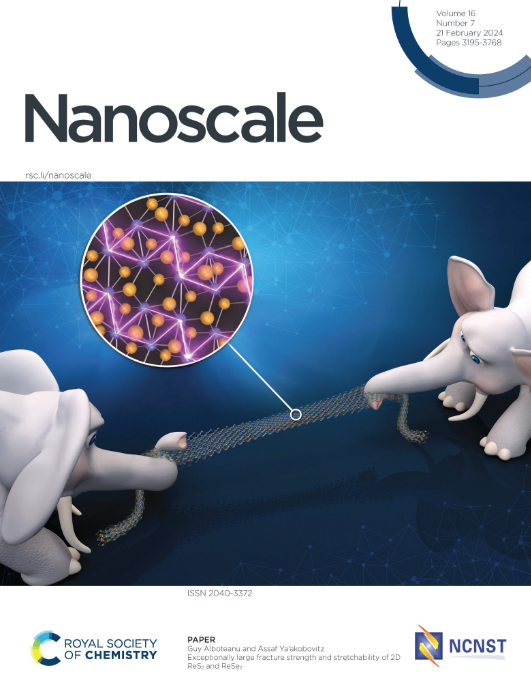Towards 1D supramolecular chiral assemblies based on porphyrin-calixarene complexes†
IF 5.8
3区 材料科学
Q1 CHEMISTRY, MULTIDISCIPLINARY
引用次数: 0
Abstract
The design of functional chiral nanostructures in aqueous solution represents one of the most exciting challenges in supramolecular chemistry, offering potential applications in catalysis, sensing, and materials science. In this scenario, it has already been shown that the hierarchical step-by-step addition of porphyrins to calix[4]arene aqueous solutions yields porphyrin-calixarene supramolecular complexes with exact and tuneable stoichiometries and defined dimensionality. The present study reports the formation of novel 1D porphyrin-calix[4]arene assemblies, achieved through a hierarchical and stoichiometrically controlled self-assembly process in water using host-guest interactions between the anionic trisulfonated porphyrin, H2DPPS3, and the cationic bis-calix[4]arene, BC₄. In addition, to obtain chiral 1D noncovalent assemblies, the copper(II) porphyrin, CuDPPS3, and the enantiomerically pure bis-calix[4]arenes, (R,R)- and (S,S)-BC4, were also used in aqueous solution. The stepwise formation of linear noncovalent and chiral assemblies, based on porphyrin-calixarene complexes, was demonstrated by a number of different techniques such as: UV-vis spectroscopy, circular dichroism (CD), resonance light scattering (RLS) and scanning electron microscopy (SEM), revealing precise stoichiometries, sequence, dimensionality and induction of chirality求助全文
约1分钟内获得全文
求助全文
来源期刊

Nanoscale
CHEMISTRY, MULTIDISCIPLINARY-NANOSCIENCE & NANOTECHNOLOGY
CiteScore
12.10
自引率
3.00%
发文量
1628
审稿时长
1.6 months
期刊介绍:
Nanoscale is a high-impact international journal, publishing high-quality research across nanoscience and nanotechnology. Nanoscale publishes a full mix of research articles on experimental and theoretical work, including reviews, communications, and full papers.Highly interdisciplinary, this journal appeals to scientists, researchers and professionals interested in nanoscience and nanotechnology, quantum materials and quantum technology, including the areas of physics, chemistry, biology, medicine, materials, energy/environment, information technology, detection science, healthcare and drug discovery, and electronics.
 求助内容:
求助内容: 应助结果提醒方式:
应助结果提醒方式:


